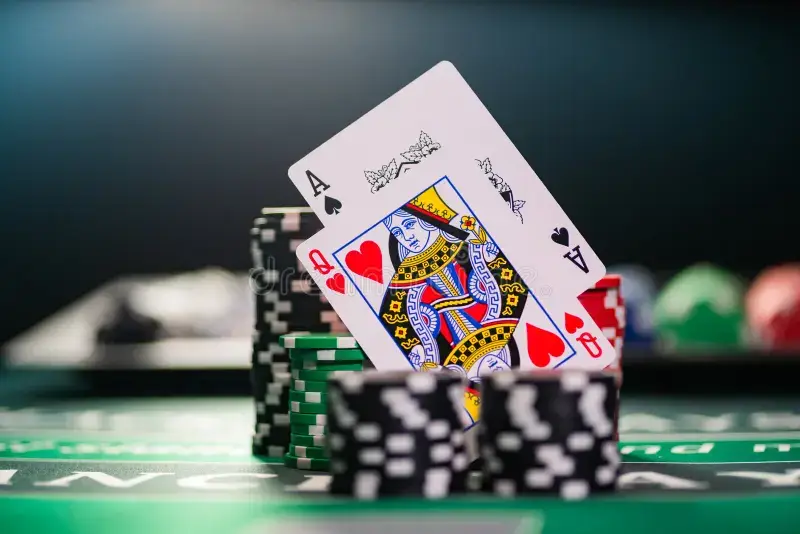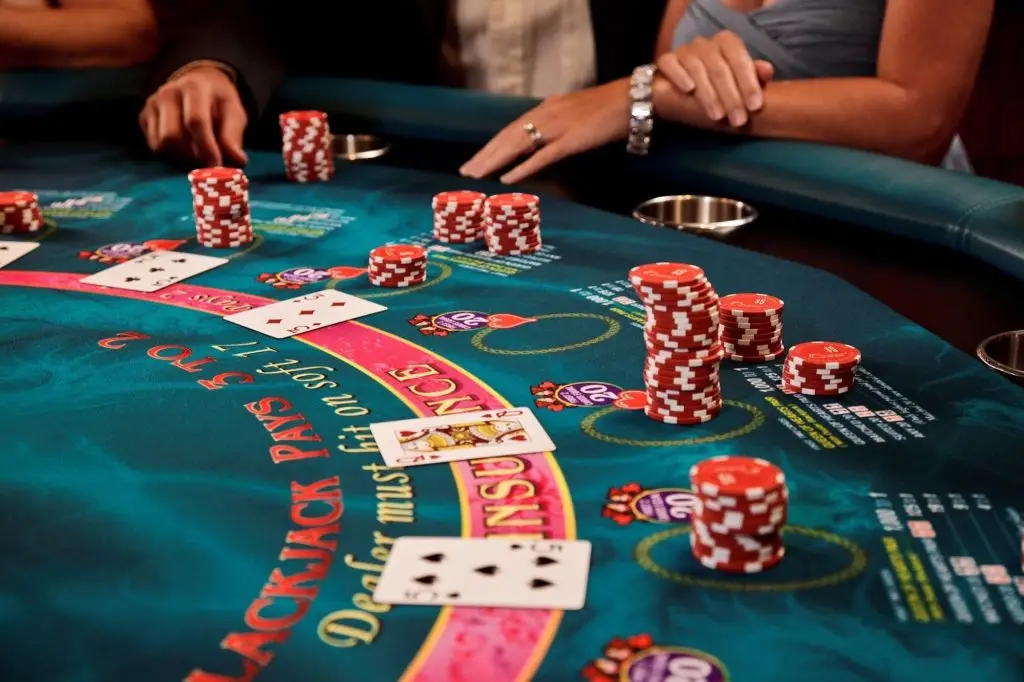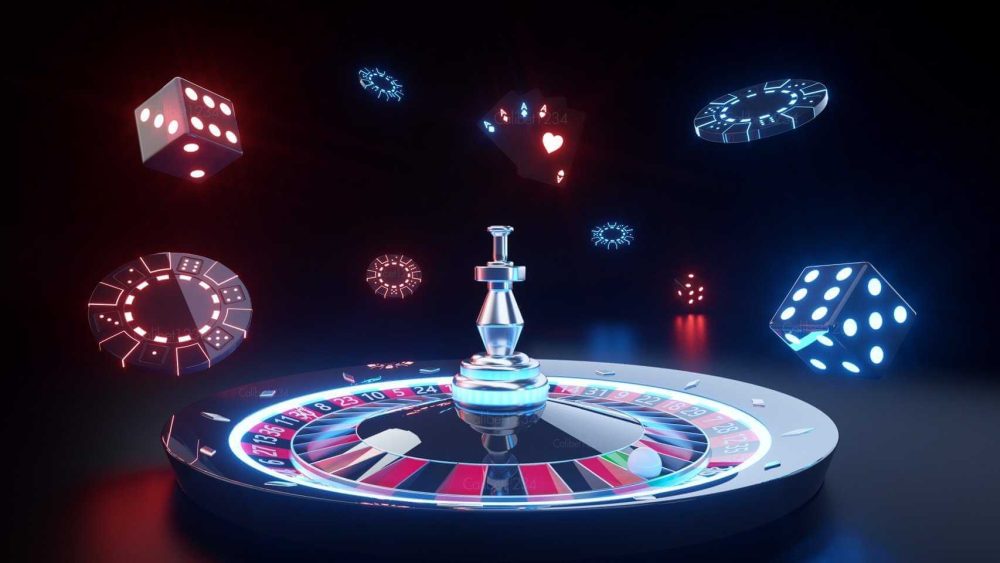Understanding the basics — the rules and the meaning of cards in blackjack — allows you to build a competent strategy rather than relying on chance. In this article, you will learn how numbers and actions at the table turn into real chances of winning.
Basics of Blackjack
In blackjack, one to eight decks of 52 cards are used. The goal is to collect a sum as close to 21 as possible without exceeding it. It is important to follow the rules and use the value of hands in the game based on precise calculations and the ability to predict the dealer’s moves.
Cards from 2 to 10 have a nominal value of points. Cards with images (jack, queen, and king) have a value of 10. The ace is unique, with a value of 1 or 11, depending on the situation. This flexibility allows you to change your strategy during the hand. It is the ace that makes blackjack a powerful tactical weapon.
Blackjack Rules: The Meaning of Cards and Their Role in the Game
 Each card creates a specific scenario. For example, a combination of an ace and a ten is an instant victory. However, two aces are no longer blackjack. This feature forces you to rethink your move, calculating how many points the cards in blackjack give you based on the current situation and the dealer’s possible reaction.
Each card creates a specific scenario. For example, a combination of an ace and a ten is an instant victory. However, two aces are no longer blackjack. This feature forces you to rethink your move, calculating how many points the cards in blackjack give you based on the current situation and the dealer’s possible reaction.

Card values:
- 2–10 — from 2 to 10 points.
- Jack, queen, and king — 10 each.
- Ace — 1 or 11, depending on the situation.
The cards don’t just participate; they rule. In blackjack, the Jack, Queen, and King form a line that guides the logic of each hand. These images are not just figures; they are the driving forces behind the strategy.
Distribution and actions: bets, decisions, and results
Players place a bet. The dealer and the player each receive two cards. However, the dealer has one of the cards open. This is not just an element; it is a guideline for the entire game. The standard strategy for beginners in blackjack involves analyzing these hands as the first step towards success.
The main actions are as follows:
- Hit — request for an additional card.
- Stand — stop the hand.
- Split — split a pair.
- Double — double the bet.
- Insurance — protection against the dealer’s blackjack.
Each of the actions uses the rules and value of the cards in blackjack as a basis for tactical choice. For example, a split is profitable with two eights, and a double is profitable with an initial 10 or 11 points against a weak dealer hand.
Score points
The use of a specific algorithm reduces the influence of intuition and replaces it with calculation. Blackjack scoring requires strict logic. 17 points are a critical zone: a weak hand for the player, but a possible stopping point for the dealer. With an ace and a six, there are two possible scores: 7 or 17.
Any value above 21 is a loss. Therefore, the ace serves as a buffer. It provides the ability to adapt when making decisions.
How to beat the casino at blackjack
The basis of victory is the assessment of probability and understanding of the current conditions. A combination of an ace and a card with 10 points is called a natural blackjack – an instant victory. But the casino does not give up: the dealer responds to any move within the framework of strictly defined rules.
He is obliged to pull up to 17 if the total is less. At the same time, the ace is considered for 11 if it does not lead to an overkill. This is the basis of the strategy for beating the house in blackjack — the player uses the advantage of the first move, the flexibility of combinations, and weaknesses in the dealer’s algorithm.
5 typical situations and the right solutions
These game scenarios are not random, but the result of analysis and experience. Knowing the rules of blackjack, even a beginner can make the right decisions in the most common situations.
Situations that beginners are more likely to encounter:
- Starting 8 against a dealer with 10 — always take.
- Ace and 7 against 9 at the dealer — stand, at the risk of overbidding.
- A pair of 8s — split always, any dealer card.
- Starting 11 against 6 at the dealer — double and take one.
- Starting 13–16 against 7–10 at the dealer — take to the safe limit.
Each situation takes into account not only the rules and the value of cards in blackjack, but also the probability of combinations. Victory is based not on luck, but on precise calculation and composure.
The deck and the probability of winning
The more decks there are, the higher the house edge. With one deck, a player gets about 0.17% advantage with an ideal strategy. With eight decks, the house edge grows to 0.65%. Therefore, a blackjack strategy for beginners requires understanding the deck structure: the number of tens, jacks, queens, and kings directly affects the probability of getting the right combination.

For example, a full deck contains 16 cards with a value of 10. These are the cards that form the basis for most strategies: an ace gives you a chance at blackjack, and a 11 gives you a chance at 21.
How to play blackjack without emotions and with profit
The algorithm of success is based on rationality. Emotions when betting and the desire to win back interfere with playing with a cold calculation. The winner is the one who uses the knowledge of probabilities and the principles of optimal behavior.
Beginners often underestimate the simplicity. Betting 10 conditional units with a hand of 11 is the perfect moment for a double. Ignoring this step reduces the potential profit by 23% of the long-term result. Each decision affects the entire bank.
Casino and the Player: A Mathematical Confrontation
How to beat the casino in blackjack? Remove the emotional component and implement a mathematical approach. Using a basic strategy reduces the house edge to 0.5%. With accurate card counting and a limited number of decks, this percentage goes into the negative zone.
This technique is not allowed everywhere. Some platforms add up to 8 decks to make forecasting more difficult. In such conditions, it is crucial to assess the current hand and make timely decisions, especially when the dealer receives a ten or an ace.
The rules and meaning of cards in blackjack: what is important to remember
 The rules and meaning of cards in blackjack create a unique gaming environment where a combination of numbers and decisions determines the outcome. Making the right choice at the right time is crucial for winning. The use of splits, doubles, insurance, or stops should always be based on the dealer’s open hands and your own account. The outcome depends not on the deck but on your ability to understand the card as a formula.
The rules and meaning of cards in blackjack create a unique gaming environment where a combination of numbers and decisions determines the outcome. Making the right choice at the right time is crucial for winning. The use of splits, doubles, insurance, or stops should always be based on the dealer’s open hands and your own account. The outcome depends not on the deck but on your ability to understand the card as a formula.
 en
en  ru
ru  de
de  ar
ar  es
es  hi
hi  fr
fr  nl
nl  it
it  pt
pt  el
el 










